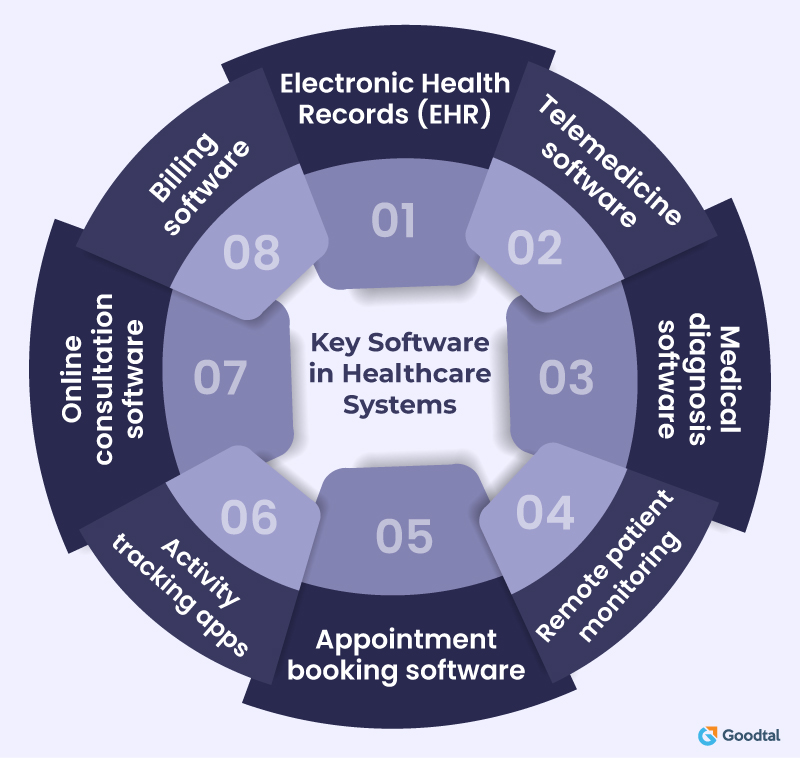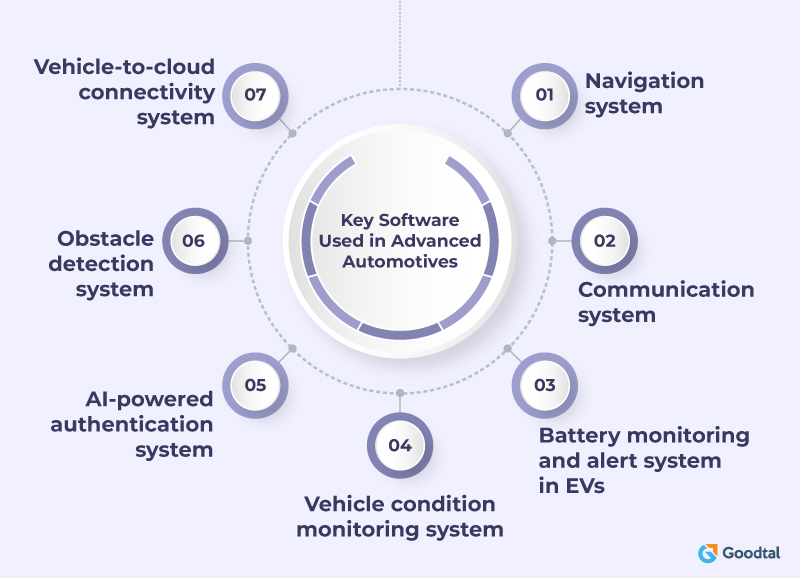
As digitalization reaches every nook and cranny of the world, we are becoming more connected and technologically advanced than ever before.
Technological advancements are the key to a healthier and happier society. Be it breakthrough innovations when it comes to healthcare that are helping people with chronic diseases get a new chance at life or technologies that are making trips to space for civilians similar to catching a flight.
In every technological advancement happening today, you’ll find a thing common to each of them; software. It can be either a single software or a group working together. This importance of software has led to a massive rise in software development demand.
Businesses from all types of industries are rushing toward top software development companies to get unique and robust software representing their company built. The global software market revenue is anticipated to reach 812.90 billion USD by 2027, up from 593.40 billion USD in 2022, with an annual growth rate of 6.50% per the 2022 report.
The software market is expected to reach its zenith in the coming years as innovation and transformation throughout the world reach new heights with the efforts of the government as well as various industries. Let’s dive deeper and look at the future of software development in the coming years.
Software Development and the Years Beyond
Today almost all of us are surrounded by a range of software, be it in our homes, offices, train stations, or malls. And as time passes and digitalization reaches every sphere of the world, the software will become an irreplaceable part of human lives.
Now, let’s move forward and see which areas and how software development will take a turn in the coming year and beyond.
#1 More Focus on Remote Work
The impact of Covid-19 has become less severe in most parts of the world thanks to vaccines, a better understanding of the virus, and knowledge of the right treatment. Owing to this, the world is quickly returning to normalcy, but there’s one trend that emerged at the time of the pandemic, still prevalent and anticipated to become a new normal; “work from home” culture, aka WFH.
Most offices around the world are experimenting with ways to make WFH more feasible, efficient, and productive for both employees and employers. Investing in WFH programs will ensure that business runs smoothly, even in uncertain times, with the proper infrastructure in place.
Industries are increasingly investing in various remote work software and setups to make this culture more effective and productive. Hence we can expect a significant boost in software development to facilitate remote work in the coming years.
Suggested Reading: Tips to Enhance Work-From-Home Productivity of Your Employees
#2 Software Development for Healthcare
The healthcare industry has been impacted the most and in a better way by digitalization. With advancements in healthcare facilities, many of the repetitive and crucial tasks are being done by a set of software.
You’ll find software everywhere in healthcare facilities, be it in electronic health records (EHR), remote health monitoring systems, medical diagnosis software, or healthcare CRM software.
Using various kinds of software along with technologies like AI and bioprinting technology, scientists are achieving breakthroughs. Be it in the early detection of diseases, treatments of chronic diseases, organ regeneration, and many such fields, different types of software are helping people live longer and fight diseases that have long been considered incurable.
Hence in the coming years, we can expect more wonders to be performed by breakthrough technologies like Artificial Intelligence with the help of great software in the field of healthcare.

#3 Software Development in Automotive Industry
The automotive industry has witnessed a massive transformation in the past few years with a fantastic kickstart to electric vehicles and self-driving cars. With countries aiming for 100% zero-emission vehicles running on roads by the end of this decade, the concept of electric vehicles has gained much momentum. It is estimated that almost two-thirds of the total vehicle sales will be of electric vehicles by 2040.
Electric vehicles depend on various software such as battery management systems, repair, and maintenance alert systems, along with common software found in classic cars such as connectivity and navigation systems.
On the other hand, in the automotive industry, autonomous or, say, self-driving vehicles have created a lot of buzz these days, with Tesla fueling the dreams of fully self-driven cars by launching autopilot mode in its vehicles. Although these Tesla cars need human intervention at certain points, the work on entirely self-driven vehicles is in full force, with companies like Nvidia, General Motors, Rivian, and Waymo joining the league.
Compared to electric vehicles, autonomous vehicles are entirely dependent on and operated by software, unlike the latter, in which only some functions are performed by software.

It’s imminent as the concept of autonomous cars and autopilot mode in electric vehicles is becoming more real, the demand for software development will increase significantly.
Suggested Reading: Why Outsourcing Software Development Is Crucial for Your Business
#4 Software Development for Environmental Protection
The awareness of climate change and its impact on the earth is growing amongst the global population. This awareness has risen as a consequence of some recent tragedies around the world, such as record-breaking heat in Europe, Asia, and North American countries like the US and Canada, floods in major parts of South Asia, and so on.
These occurrences have led to global outroar for governments to take action against factors contributing to global warming, especially industries with high carbon emissions and those not using eco-friendly measures.
Various types of software have been contributing a lot in multiple ways to tackle climate change. Be it helping make forecasts, continuous weather monitoring, or suggesting preventive measures with the help of Artificial Intelligence, software for environmental protection is assisting in every sphere.
Hence we can see more software development for environmental protection in the coming years as the need to act against climate change becomes more critical.
#5 Software Development for IoT
The Internet of Things technology is swiftly becoming a part of our houses, surroundings, and daily lives as the technologies behind its implementation are becoming more economical. For the success of any technology, it being economical is essential for it to be used by a wider population.
With the availability of a large community of software developers, IoT development has become more budget-friendly. Java, C++, and Python are some of the top software development languages popular in IoT development. Businesses can choose from Goodtal’s list of top Java, Python, and C++ developers to get the IoT software of their choice built in minimal time and budget.
An IoT-powered system consists of a range of software for different stages of its functioning. Software for sensors, data preprocessing, and cloud are some of the most common software in any IoT architecture.
In the coming years, Internet of Things technology is anticipated to be more prevalent and economical, accompanied by a rise in software development for IoT architecture. Hence in the future, we can see vast opportunities for software developers in the field of IoT development.
#6 Strengthening Cybersecurity
With the rise in digitalization and internet accessibility, as well as online services, the cybersecurity threat is becoming more severe. This has led to an increase in the development of software solutions for curbing the rising cybersecurity threat.
AI in software development has proven to be very effective against various types of cyber threats and finding the inner loopholes in a system that can act as a provision to potential threats. This software alerts the authorities in advance of any potential threat. Moreover, the software can be programmed to fix errors or take measures by itself against the threat it has sensed.
Hence as the number of connected devices keeps increasing exponentially, the potential for cyber threats is rising too. But, by using advanced cybersecurity software solutions, the vulnerability can be reduced to a significant extent. Therefore we can see a rise in demand for software solutions for mitigating cyber threats in the next few years.
#7 Industrial Automation
Industrial automation is on the rise in every industry owing to its efficacy in boosting productivity. According to Statista, it’s anticipated that the global industrial automation market will rise to around 265 billion USD by 2025, up from 207 billion USD expected in 2022.
As industrial automation reaches its pinnacle, the software development demand is also anticipated to soar. Software is the primary source of power for automation of any sort. Whether you wish to add robots to complete repetitive tasks with utmost accuracy or automate the monitoring and controlling of various plants in the industry, software is needed.
So, as the industrial automation demand and market boom, the need for software development will also soar, opening doors to excellent opportunities for software developers.

Wrapping Up
Today, most things functioning around us are running on one or more software. With the rise in digitalization, the whole world is advancing in every sphere. And as internet connectivity reaches every nook and cranny of the world and with an increase in connected devices, the demand for software developers will be soaring soon.
This post discussed the potential fields where software development will be soaring in 2023 and the years to come. We discussed how software development would impact various areas such as healthcare, IoT, the automotive industry, cybersecurity, automation, and environmental protection. We also discussed how different kinds of software would help strengthen remote work infrastructure and improve collaboration within departments.
